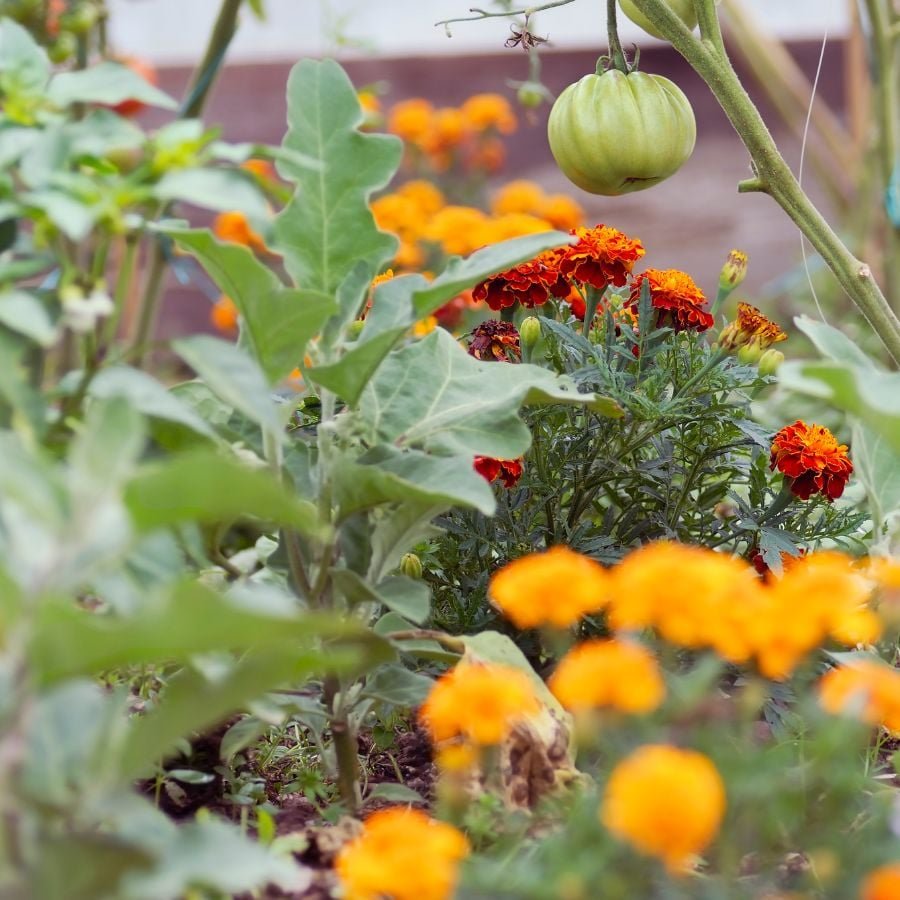I learned that one simple gardening trick can boost harvests quickly while cutting pest numbers almost in half. The trick is companion planting: nature’s way of helping plants work better together.
After many seasons of trial and error, this method turned my weak veggie beds into a healthy, busy garden in no time.
No need to stress about fancy layouts. These 10 plant partners work well with little effort. Ready to match plants the easy way? Let’s go.
Plant Partners That Work Wonders
1. Tomatoes & Basil: A Reliable Match
This pair isn’t just delicious on the plate. Basil’s strong smell helps keep away pests like aphids and hornworms that usually bother tomatoes.

Growing them together can even make tomatoes taste better. (Seriously. My tomatoes tasted so much better once I planted basil beside them.)
2. Carrots & Onions: A Simple Defense
Carrot flies can wipe out a crop fast, but onions help block them. In return, carrots help loosen the soil for onion bulbs. They just work well together.
3. Corn & Beans: The Old “Three Sisters” Duo
This old planting method makes sense. Beans add nitrogen to the soil, which corn needs. The corn stalks give the beans something to climb. It’s a natural setup that works smoothly.
4. Cucumbers & Nasturtiums: The Decoy
Nasturtiums act like bait, pulling pests like aphids and beetles away from cucumbers. They also have pretty flowers that you can eat with a pepper-like taste.
5. Peppers & Marigolds: Root Protectors
A common mistake is planting peppers without help. Marigold roots release compounds that chase away nematodes that damage pepper roots.
Some studies show that marigolds can reduce nematode populations by up to 90%. Their blooms look nice, too.
6. Lettuce & Radishes: Soil Helpers
Radishes break up compacted soil, allowing lettuce roots to grow deeper. This makes lettuce stronger on hot and dry days. Radishes also grow fast, so you get an early harvest while waiting for your lettuce.
7. Squash & Borage: Bee Magnets
Squash needs more bees, and borage attracts them. These bright blue flowers pull in loads of pollinators and help keep pests away from squash. Knowing this pairing gives you better fruit.
8. Potatoes & Horseradish: A Surprise Team
This pair sounds odd, but it works. Horseradish contains natural compounds that help keep potatoes strong and beetles away. Plant horseradish at the corners of the potato bed for protection.
9. Strawberries & Thyme: Berry Guards
Slugs love strawberries, but thyme helps stop them with its strong scent. Thyme also acts as ground cover, keeping berries off the soil and reducing fungal problems. Simple and smart.
10. Cabbage & Dill: Friendly Bug Attractors
Dill doesn’t chase pests. Instead, it brings in helpful insects like ladybugs and lacewings that eat cabbage worms. It’s like having tiny guards watching over your cabbages.
Why Companion Planting Works
Companion planting is more than old advice. It’s backed by how plants interact. They use scents and root signals to communicate with one another. The results can be big:
- Less pest damage, fewer sprays
- Better pollination
- Grow more in small spaces
- Better soil use
- Shade where needed

When you match plants well, everything grows better together.
How To Start
Try just two or three partner groups this season. Watch how plant health, pest problems, and harvest amounts change.
Remember: it’s not just about putting plants next to each other. It’s about letting them support each other. Keep them close but not crowded; about 12–18 inches apart works for most pairs.
With the right partners, your garden becomes a group that works together instead of single plants growing alone. That’s the goal for most of us anyway.

